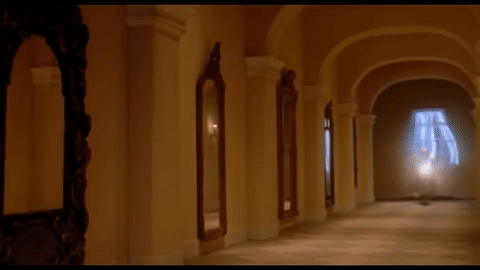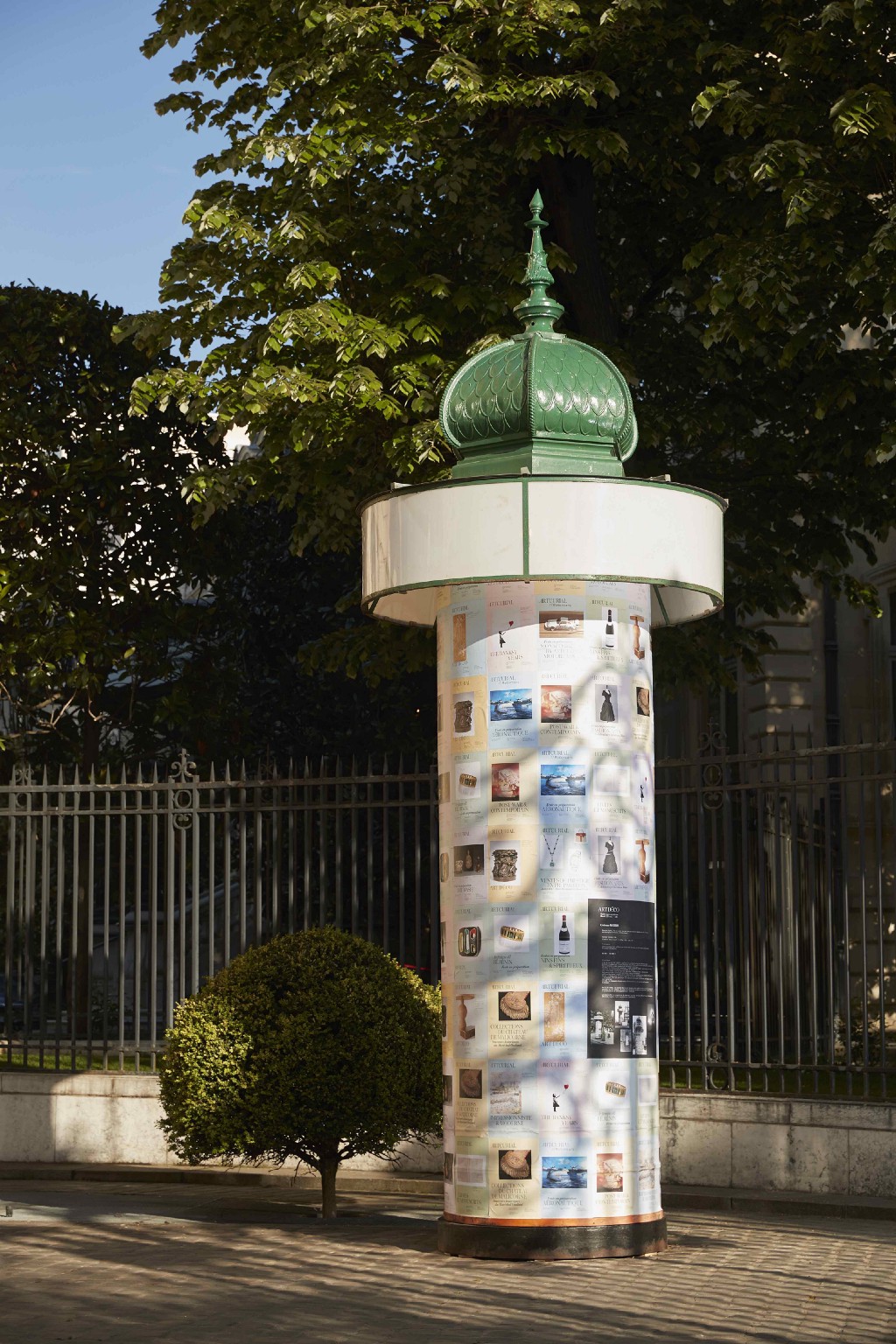Imre Kiss, "Shadow Universe"
Can you even wait for the next thing?

What’s going to happen today? NOBODY KNOWS! That’s the great thing about life now, every day there is something completely new and unexpected, coming at an unpredictable time and revealing novel and surprising scenarios which completely overwrite those which occurred the day before! You never have any idea what’s going to happen next and it keeps happening to you all the time! How remarkable! Think of the poor people who lived in the decades prior to now, whose lives were dull and eventless and proceeded at such a glacial pace. How jealous they would be of you if they only knew what a roller coaster ride your day-to-day life is! Sometimes it’s hard to believe, right? Anyway, here’s “a trippy neo-tribal burner doped on trance’y saturations, flanged percs and subtle exotic drum taps.” I don’t know either and it doesn’t make a difference because everything is astounding now! Enjoy!
New York City, May 15, 2017

★★★★ The chill was only a chill; the gusts that lifted long hair straight up and pushed past the laces of the canvas shoes were as coolly gentle on arrival as they had been fierce in approach. The sunlight and the clouds were both fleeting, so that a step off a darkened curb led into a crosswalk so bright the stripes seemed to be lit from below. Grasses swayed in their plantings on the top of a hard new building’s metal canopy. The late light enlarged every grain of dirt by the shoes in the entrance hall. The after-dinner sky was so bright that the shadows in the forecourt looked like twilight by contrast. The leaves of the trees and bushes trembled and somewhere inside them the birds twittered with fervor, the sound throbbing in and out of phase.
In Defense of Long Layovers
Stay a while

Save for a period of Italian occupation during World War II, Haile Selassie reigned over Ethiopia from 1930 until 1974, at which point famine and mutiny drove him into house arrest for the remainder of his life. But the presence of the 225th and last emperor of Ethiopia still stalks the capital of Addis Ababa, where his palace — set among palm gardens thick with smirking undergrad couples — now holds the capital’s Ethnological Museum. There, in Selassie’s well-preserved chambers, visitors can contemplate in quiet solitude one of the strangest artifacts in a clamorous city choked by traffic and propelled by the engine of Africa’s fastest-growing economy.
Decked out in a mélange of velvet-cushioned chairs, elaborate drapery, and gold lions, Selassie’s powder-blue bed sits shrink-wrapped in the sort of thick plastic most commonly found in the households of octogenarian Floridian swing-voters. Yes, the kind that makes fart sounds when you drag sweat-damp thighs across it. As I beheld the mummified Imperial divan, and heard my affable tour guide’s delighted sighs echo off the blue porcelain of Selassie’s decommissioned loo in the adjacent room, I fell in love with long layovers. It’s not a popular opinion, especially as governments and airlines suck any remaining fun and wonder out of air travel. But here’s the deal.
The cheapest long-haul fares often entail byzantine itineraries, long intervals traversing mountains of duty-free Toblerone, and pre-dawn connections that require multiple security shakedowns (not to mention the corollary hangovers resulting from consumption — at altitude — of four mini bottles of airplane-grade merlot). It makes perfect sense to skirt these inconveniences, if only to avoid having to wrest naps out of leatherette airport chairs designed specifically to obviate any possibility of meaningful slumber. Most travelers may be forgiven for going with a direct flight.
But airlines have recognized that long layovers can benefit their bottom line and provide tourists with what feels like a distinctive experience. The 2008 global economic collapse dealt a Thor-sized hammer blow to Iceland’s GDP, but also found Americans scrambling for deals on transatlantic flights. For decades, Icelandair has sold cheap flights to Europe with 18-hour layovers in Reykjavik. The financial crisis brought new popularity to these itineraries, which have always been a scheme to entice in-country spending. Icelandair marketed the snot out of their layovers, luring frugal Ibiza-bound millennials — nostalgic for Sigur Rós and intrigued by the prospect of canoodling with real-life Vikings — to experience the sulfuric waters and midnight sun of life at the edge of the Arctic. In the morning, they’d blearily re-board handsome Icelandair 757’s, having spent a surprising quantity of króna on wool sweaters and mini-bottles of brennivín. A decade later, those millennials now have jobs at tech companies and are returning en masse to Iceland, primarily to post to Instagram.
There are reasons beyond frugality to plan long layovers. To spend between five and 24 hours somewhere can prove a challenging, humbling, and illuminating exercise. You can’t get anything more than the briefest glimpse of a place, but you’re there for long enough to exercise parts of the brain that are lulled to sleep by traditional vacations. Such layovers develop one’s capacity to navigate a city’s distinct challenges: the particular (in)efficiency of its transportation system, the (un)availability of free Wi-Fi to navigate neighborhoods without asking other humans for directions, the (im)precise distribution of public restrooms, and the often arbitrary opening hours of tourist sites. On a daylong stop in London, I found the Turbine Room of the Tate Modern closed and my walking route interrupted by an endless stream of sweaty Brits completing a festive Sunday fun-run. On a weekend morning in Oslo, the streets were so empty — and I was so jet-lagged after my three-hour red-eye from Reykjavik (see above) — that I spooked myself into thinking I’d awoken into a zombie movie instead of the thriving Scandinavian wonderland I’d envisioned.
Long layovers also prepare you to better cope with unexpected delays — you know how to handle, and even look forward to, the chance to spend an inconvenient amount of time in an unfamiliar place. Returning from a two-week trip to France and Italy with my mother (a different story), we missed our connection in Dublin. Anxious to get home, she started to cry. I convinced her it was great news! We’d have eight hours to rest before crossing the Atlantic! She could check off another country! And we’d drink real Guinness! Sure, we drank that Guinness at an airport Holiday Inn, but she’ll still say it was the best beer of her life.
For planning freaks, the arrhythmia of long layovers offers a kind of touristic training in flexibility and trade-offs. One must accept that there’s little hope of hitting the Coliseum, Pantheon, Piazza Navona, Trevi Fountain, Musei Vaticani, and four gelaterias in eight hours, before heading to Fiumicino Airport. Every choice about how to spend time on a long layover seems more valuable, more emphatically made at the expense of alternatives. Every steak and ale pie, slurred conversation with bartender, sniffed rose, panoramic view, and gold lion is electric with the sense that any single experience entails the cost of any other.
I like to think — because of the imperative to make decisions quickly and their sense of gravity — long layovers could serve as exemplary relationship tests. Hemingway said, “Never go on trips with anyone you do not love.” I’d go further: if a person still fancies you, having schlepped a suitcase across siesta-silent Madrid in mid-July — with everything closed and scant shelter from the madrileño sun — marry that person. It bears mentioning that these experiences don’t always produce live-lit-ready rhapsodies on the smallness of the world, the speed of modern life, and answers to that click-baitiest of questions: why do we travel. One does well to remember Jamaica Kincaid on this subject: “The thing you always suspected about yourself the minute you became a tourist is true: A tourist is an ugly human being.”
Qatar Airways (“the world’s only five-star airline”) also markets long layovers, promising tourists a luxurious stop in Doha on return trips to Western Europe from points east. The cabin of my flight from Calcutta, filled with migrant workers with no carry-ons, was sprayed with insecticide before departure (a process called “disinsection,” no less humiliating for its being common). Upon arrival, a Filipino immigrant in white gloves drove me in a boat-sized Rolls Royce to the St. Regis. At the almost empty hotel, a butler of South Asian extraction carried my bag and described my turndown service. In the blue topaz harbor, empty wooden fishing boats sat next to new 8-lane roads, against the backdrop of a fantasy skyline and the stern I.M. Pei-designed Museum of Islamic Art. As I hiked across a massive crosswalk to the Souq-Waqif, a Toyota Previa packed full of workers sat sputtering next to a Maserati at a red light.
“An ugly thing,” Kincaid continues, “that is what you are when you become a tourist, an ugly, empty thing, a stupid thing, a piece of rubbish pausing here and there to gaze at this and taste that.” I sat drinking tea and smoking hookah in a café, watching a gaggle of Scots in fanny packs take iPhone pictures. Does it make a tourist even uglier if the pauses are briefer? The next morning, a desiccated beetle fell out of a sugar packet and into the coffee that was delivered anonymously to my room. I spooned it out and drank the coffee. Is it better not to go — to stay home and not to risk the ugliness? Is it better to acknowledge the ugliness and try to understand and attack its root?
In Addis, photographing the self-proclaimed Lion of Judah’s neck pillows, I considered whether I should slink back to the airport. It had been hours and I still couldn’t pronounce “thank you” (incidentally: it’s አመሰግናለሁ in Amharic, transliterated unhelpfully as “amäsäggänallähw,” which, good luck). I felt out of place, incapable even of apologizing for my clumsiness, yet wanting to ask questions, to see more, and to take down as much as possible. I left feeling that I had experienced too little, and that I needed to go back and try again: to revisit and revise. Only with time, practice, and rewriting have I come to realize: that seems to be exactly the point.
A-J Aronstein lives in New York and writes when he can. Follow him on Twitter or Instagram, especially if you like pictures of pizza.
The Loudest Brunch Spot On The Lower East Side Is Closing: A Poem
Bye, Schiller’s

Pete Wells was right
Lockhart was wrong;
Schiller’s shone bright
But the food took too long.
The bathrooms were strange
Like Ally McBeal;
I know it’s a change
But I’m sure you can deal.
There’s still Odeon
And Cherche Midi;
The end of this one
Should not be pitied.
I’m sure you and yours
Can find a new place
To open the doors
And get daytime shitfaced
Schiller’s Is Closing in August After 14 Years
(Also it was loud as hell. Good riddance.)
Nevermind About PWR BTTM
Fool me once.

I previously wrote about PWR BTTM’s enjoyable music video for “Answer My Text,” but now it turns out you can no longer watch that video, nor can you hear any of their music on streaming services. After some pretty widely corroborated sexual assault allegations, this is pretty much the end of the road for the genderqueer duo. They’ve been dropped by their management and their label, and they appear to have canceled their tour, with venues and opening artists dropping out after hearing the news.
PWR BTTM’s Music Yanked From Streaming Services Following Assault Allegations
There is something deeply unsettling about a band whose whole shtick is a glittery performance of gender fluidity and sexual acceptance being at the center of a controversy like this one. After their first album came out, PWR BTTM felt like a beacon, appealing to a set of younger queer people who didn’t really hear their own voices reflected in more current mainstream music (except for maybe Demi Lovato’s “Cool For The Summer” which is 100% about going lez for the summer, and frankly I would hit that, but I wouldn’t really call that queer). There was queercore, but there was not yet dragcore.
I spoke to The Awl’s classical music columnist and previously enthusiastic PWR BTTM fan, Fran Hoepfner, about the feeling of whiplash some fans are currently feeling:
the whole thing feels like a betrayal of trust in a message — “you are safe, you are valued” — and one of the rare times it seems literally impossible to separate the art from the artist. there’s also this feeling of getting so close — the rave NY Times review, the inching towards mainstream — and having all of that snatched away so quickly and so suddenly that the emotional whiplash of it is very overwhelming.
I suppose the greatest solace in this whole debacle is that this all happened as swiftly as it did. And as long as artists keep being humans in the world, the artist–art struggle will remain. In a freakishly well-timed interview by the New York Times, Ben Hopkins told Matthew Schneier about the feeling of empowerment they got from being part of the queer punk duo:
“What is empowering for me in PWR BTTM is, I am going to take up this space — very effeminate and very insecure, ridiculous in a $2 thrift store dress on with stars glued to my face — and go do that thing I wanted to do. For me, it always makes sense that there’s power in the name — I feel powerful.”
PWR BTTM: A Punk Band in the Glare
Perhaps too powerful? Among other damning evidence, a picture of Hopkins that circulated last year resurfaced—they were kneeling on the beach next to a swastika in the sand. Hopkins tweeted an apology for the image essentially copping to being a “stupid kid.” It’s rather a spectacular fall from a grace perhaps too easily given. I’m hopeful about how positively received the group was — we were ready for them; they just weren’t ready for this.
"It's All Coming Back to Me Now" is a Very Weird Song
The third single from Céline Dion’s 1996 “Falling into You,” is a ballad for a corpse.

On July 30, 1996, Céline Dion released the third single from her incredibly successful album, “Falling into You.” The single, “It’s All Coming Back to Me Now” was a hit, ultimately peaking at number two on Billboards Hot 100 chart. But dear God, was it ever a weird song. Selected as the leadoff song on the album, it’s placement both as a widely released single and as the introduction to Céline’s most-popular album brings up one really interesting question; who starts a mainstream, 90s “adult” (i.e., mom) pop album off with an abnormally long ballad about dancing with a corpse? Whoops, may have jumped too far ahead there.
To begin with, the album version is seven and a half minutes long. This may not seem like an exceptionally long song, but for a mid-90s pop hit by Céline, this is downright epic. The widely released version you’re probably familiar with was cut down to a more radio-friendly five minutes and thirty seconds, but even then, this length is nearly unprecedented for her. Her second-longest song, “Us,” clocks in at five minutes and forty-five seconds.
“It’s All Coming Back to Me Now” was written and produced by Jim Steinman, a longtime songwriter for Meatloaf, which now makes it impossible to hear the song as anything other than a Meatloaf song. This was the only song Steinman wrote for her “Falling into You” album (though he helped produce a few others). He specializes in crafting huge, melodramatic ballads, so a singer with the vocal range and the ability to express powerful, life-and-death emotions like Céline is a necessity for him. Steinman also wrote “Total Eclipse of the Heart,” and, apparently, a theme song for Hulk Hogan in the ’80s. He only does things one way: over the top and incredibly emotional.
On his very outdated website, Steinman describes ”It’s All Coming Back to Me Now” as “an erotic motorcycle.” Steinman himself always dressed as a kind of gothic, leather-clad biker. Later on he’d pitch this imagery to the director of the song’s music video, Nigel Dick, who really doubled down on the idea.
Steinman also says on his website that he wrote the song, “under the influence of Wuthering Heights.” This checks out — the song is melodramatic and tortured as hell. Consider the first verse:
There were nights when the wind was so cold
That my body froze in bed if I just listened to it
Right outside the window
There were days when the sun was so cruel
That all the tears turned to dust
And I just knew my eyes were drying up forever
The song goes on to paint the picture of a narrator who “banished every memory you and I had ever made,” likely due to the fact that the relationship was a very abusive one. A later verse explains:
There were those empty threats and hollow lies
And whenever you tried to hurt me
I just hurt you even worse and so much deeper.
That’s not great. While this does bring up the specter of physical abuse, with all the context around the song, it seems more clear this is a kind of obsessive, emotional abuse. Steinman explains:
It’s like Heathcliffe (sic) digging up Kathy’s corpse and dancing with it in the cold moonlight. You can’t get more extreme, operatic or passionate than that. I was trying to write a song about dead things coming to life. I was trying to write a song about being enslaved and obsessed by love, not just enchanted and happy with it.
He felt so strongly this song should be performed by a woman that after writing it, that he sat on it for years, allowing only and obscure girl group “Pandora’s Box” to record it. You know who that pissed off? Meatloaf, who (correctly) thought it was the perfect Meatloaf song. Steinman wasn’t having it though, and as the dispute over the song’s usage ramped up, he took Meatloaf to court to block him from recording it. Eventually, Meatloaf did end up recording a duet version of it for his 2006 album “Bat Out of Hell III: The Monster is Loose,” but his version can’t hold a candle to Céline’s.
Céline is an archetype — the embodiment of the squeaky-clean diva. She sang THE ballads of the ’90s: “Because You Loved Me,” “All By Myself,” and (cue the tin whistle) “My Heart Will Go On,” probably the biggest ballad of the decade with the possible exception of Whitney Houston’s “I Will Always Love You.” Throughout her ’90s peak, Céline belted those ballads out over impeccably manicured soundscapes, full of breezy drums, watery acoustic guitar and choirs — oh, the choirs — backing her up. Her persona was essentially being as agreeable as possible. Even now, hunkered down in Las Vegas, she’s the clean, family entertainment option within the city Gil Grissom swabbed.
The only genuinely weird thing most people knew about Céline was her marriage with her late husband and manager, René Angélil, who was 26 years her senior and first met Céline when she was only 12. They maintained they didn’t begin dating until she was 19, and there’s not much internet controversy around it, so there’s no reason to believe that isn’t the case. But it’s the only thing that sticks out about Céline’s well-manicured persona. When Céline was at the peak of her powers in 1996, she was 28. Her husband was 54. Kind of weird?
Other than that ONE THING, though, Céline has a pretty spotless reputation. Which is one of the reasons why having her sing this song is so odd. The theme behind the it — even Steinman himself — it’s all so much different from her usual material. She obviously has the vocal ability to get through the marathon performance, but no other songs in her catalog touch on such deep-seated passions, for lack of a better term. The other singles from this album, “Because You Loved Me,” “All By Myself,” and the title track of “Falling into You” are powerful ballads, but they kind of deal in surface-level emotions. “Because You Loved Me”’s main thesis statement is basically, “things were tough for a bit but you were there for me and now things are great, thanks!” Which is a good message plenty of people can relate to, but this is so much different from “my eyes drying up forever.”
The first minute-plus is instrumental, detailing that something catastrophic is happening. Piano chords ring out, and the melody is slowly tapped out. Suddenly, a drum strike, accompanied by the sound of crashing thunder — things are not currently so great. For this portion of the song, the unintentionally hilarious music video posits a motorcycle crash; the death of Céline’s lover as he recklessly speeds away on Steinman’s “erotic motorcycle” in the rain, only for a strike of lightning to knock a tree over, fall into the middle of the road and catch on fire. There’s an explosion. He doesn’t make it. But, he comes back to haunt Céline/drive his ghost motorcycle down the hall in special effects worthy of the finest episode of “Are You Afraid of the Dark?”

After this set-up, we move from a slowly building verse, to a heightened pre-chorus, to the explosive “baby, baby, baby!” and then the chorus, which Céline really belts the hell out of. It’s an incredibly cathartic moment. How do you follow up that crazy crescendo? Silence settles in. It lingers. Then, the song just kind of starts back up again, repeating the same structure with some new lyrics in the verse. A new fuse is lit, before exploding in the chorus. Only this time, rather than silence at the conclusion, there’s a very slow fade out where Céline gently whispers the chorus and piano keys twinkle us out…. and onto the remaining hour-plus of remaining album, if you’re a Céline album purist.
Most ballads don’t do this. The format is generally a slow burn, going verse/chorus/verse/chorus/bridge and then, finally, BOOM, the payoff: the chorus explosion where the singer really lets into it. Think “My Heart Will Go On,” or yes, the best example of this form, Whitney’s “I Will Always Love You.” The reason to listen to the latter isn’t the random saxophone solo in the middle, it’s the one iconic drum sequence followed by Whitney letting loose in a way which I won’t even attempt alone in my car. I just silently nod in respect.
“It’s All Coming Back to Me Now” ignores all of this. It doesn’t build to one payoff; it is essentially itself one long payoff. It’s operatic. It’s melodramatic. It’s written by a guy who looked like this:

The entire thing screams excess. A song ostensibly about (metaphorically, but still) digging up your loved one’s corpse and “dancing” with it became one of the most popular songs of 1996, ending the year at number 18 on the Billboard Hot 100. The music video features a ghost boyfriend who just doesn’t know when to let go.

So often, pop ballads seem to have come off a conveyor belt, designed for maximum appeal by multiple songwriters with minimal risk-taking in the composition. It’s all carefully processed to gently play in the background of your commute. But occasionally, you get truly unique weirdos like Jim Steinman and songs like “It’s All Coming Back to Me Now.” Céline was really going for it in 1996, and she made the decision to have this tune kick off her album. How incredibly bold! She didn’t play it safe, at all, and she was right. I’ve been listening to this song on repeat for weeks now and I have to say, it’s a thrill. That Jim Steinman, he’s just a mad man with an incredibly unique style and sound. Yes, it can sound like a bit much at times, but the grandeur of it all is a little bit intoxicating. Sometimes, I just want to sit back, put on a song like this, and be taken on an epic, slightly cheesy ride for almost eight minutes.
Fuck Half Shower Doors
Not all glass walls are created equal.

There is nothing better than a good shower. On a hot day, it’s better than air conditioning and popsicles. On a cold day, it’ll wrap around you like cashmere except, well, slippery and not at all cashmere. Showers are one of modern life’s best creations. But, unfortunately and unfairly, not all showers are created equal. Have you ever gone into a new bathroom, ready to shower, and been confronted with only half of a shower door, made of glass? Yeah, that’s right, I said it, half a glass door. One side is there, ready to support you in your endeavor, and then it just ends, cemented to the shower frame but hanging in the air like half of a high five.
It’s called a “fixed panel seamless shower door” and it is a bullshit design invention. This isn’t an opinion. This is a fact. And the worst part is that they seem to be everywhere now too. It’s a staple of trendy hotels that you regret staying in and new apartment buildings that gentrify Brooklyn. So many new constructions have these dumb-dumb nightmares that at times they feel like they’re inescapable, which I realized when I moved into a new apartment this month and was faced with one to shower in every day for the next year.
There is exactly no reason to have them, from a consumer perspective. In fact, they make showering miserable. “Hey guys, you know what’s fun? Standing naked in a giant bowl!”, said no one ever. The lack of a second door means that one side of me is always exposed, making me play favorites. Do I want my butt to be out in the open, or do I risk it all and go full frontal? And where do I put my body when I don’t want to be directly in the line of the water? Oh I know, I’ll just stand over here, basically in the middle of the room, shivering until parts of my body fall off.
Meanwhile, all of the water that should have been on my body, keeping me warm, is now on my bathroom floor, creating a flash flood-style disaster for me to walk into post-shower. This is just downright mean to the bathmat. This is not what the bathmat signed up for. It was there for minimal water contact, not to be my own version of Noah’s ark.
Infuriated and unconvinced that anyone would actually ask for this trash design, I decided to do some research to find out what I was missing. My internet sleuthing led me to two theories: a hatred of cleaning and a love of baths. Apparently people don’t like cleaning their shower so much that they think that having just half of a wall to clean once in awhile is worth all of their trash showers in between. Which is, I’m sorry, pretty lazy.
People also seem to find it easier to take a luxurious bath without a second glass door in their way. This, I kind of understand except that baths are totally overrated, as you’re just laying in your own dirt water. So, neither of these explanations are terribly compelling to me. Thus, I decided to go to the source of this bullshit invention: interior designers. Is this just one of those things that designers love so now we all have to suffer for it?
I started with my girlfriend’s mom and dad who happen to be an interior designer and architect, respectively. First I asked what they’re called, to which her mom said, “structural glass floating,” which is not a thing. My girlfriend and I eventually realized she is referencing “floating structural glass,” which is something they use in conference rooms and stairs at the hospitals and large scale buildings they design. Her dad just called it “a whole bathroom shower.” I think he got to this from the idea of a “wet room.” But the difference is that the wet room is even worse than what I’m talking about.
A wet room can have a half-glass door but sometimes it has no door at all! The floor area of the shower is flush to the ground so that the water drains away through an outlet set into the floor! Basically half of your bathroom is a shower! I’m livid! He was not wrong but I’m livid! The other option that exists is called a “European shower door,” these “enclosures,” as they are called over and over again on Google, are often half-glass but they’re even worse somehow, because they are on hinges and swing both in and out. This means that your tiny dumb-door drips, just right onto the fucking ground or that you swing it into you, which I have done and you are lying if you say you have not. After all this research it was nice to find I was on the right path but upsetting that there were so many different types of terrible. I needed another round of support, so I reached out to another source: a residential interior designer.
Enter Emma Lesser, a designer from design firm, Emma Beryl. She makes her client’s New York apartments look like they aren’t located in a city that is covered in rat-piss. She told me that the biggest benefit of these monstrosities is that it actually can make a bathroom look and feel bigger. “From an aesthetic standpoint your bathroom will appear larger because there’s no visible shower barrier, your shower itself will feel roomier and less claustrophobic.”
This [dramatic pause] makes sense and is probably important in a small space like a hotel room or New York apartment. Also, apparently there is no standard size for these things, you can customize the size of the door, which gives them design flexibility and makes them easy to install. I asked another designer, Casey DeBois from Debois Design, who said she also felt that the benefits were design-based. “When using really interesting and unique tile in the shower, the last thing I would want to do is cover it with a shower curtain.” Ah, fair.
But what if you’re just a normal plebe who doesn’t have fancy shower tiles? Turns out the benefit actually is cleanliness! Both Emma and Casey referenced the fact that they’re easier to clean, leading to less mold and will show less wear than a typical framed shower door. This made me feel slightly bad about making fun of people who are too lazy to clean their shower doors, oops.
Anyway, does all of this mean American bathrooms are being recognized as an important space in your home, as opposed to where you shit and read articles about Trump? Emma seems to think so, “In my opinion, in recent years there has been an emphasis on designing your bathroom to be more personalized, comfortable, and relaxing. The simplicity of frameless shower doors is an appealing way to cleanly enclose your shower without distracting from other design choices.”
Hmmmm. Okay. Well. I’m down with the idea of treating your bathroom with the respect that it deserves, especially if I’m staying in a nice hotel that I only spend a few hours in on my whole trip. But can we agree to rethink this one? For my ass and my poor, poor bathmat?
Mackenzie is a writer and creative consultant based in Brooklyn. You can follow her on Twitter, where she just talks about One Direction, or you can check out her website, which is not nearly as embarrassing.
Road Hog, "Booty Race"
No, the world didn’t suddenly get okay again while you were asleep.

You know what’s good right now? PRACTICALLY NOTHING. We don’t need to belabor the point, you know exactly what I’m talking about. It’s bad. Given everything going on right now I think that, as sad as it was for everyone, I’d just as soon return to the time when a different celebrity was dying every day. Remember that? When all the celebrities were dying? You were upset, sure, but you didn’t spend every second of your life in a crippling panic of existential dread whose source you could actually pinpoint, which was somehow worse because it revealed to you just how powerless you actually are. Anyway, there is something that is good in this world, and it is Road Hog’s new one, Haul Ass. Get it and play it in the background during your most upset times, which is all the time now. Enjoy.
New York City, May 14, 2017

★★★★ The only signs of the relentless rain from the day before were still-deep puddles, now reflecting clear sky, and various pulpy things and battered green leaves stuck to the pavement. The morning breeze was fresh and cool. Sidewalk cafe seating barriers were being brought out. The clouds went, through the hours, from absent to lightly ornamental to substantial to gray. The first wave of gloom somehow passed by without raining, chased by clear light, but after it came another clot of storm, on a direct line, its clouds lumpy in places and veiled in others. It hit with a clatter of drops and a keening of wind, pausing the afternoon plans as it gusted through. In almost no time, things were bright again, the breeze dry. A child had laid a curve of wooden track, with a train on it, in the middle of a meal on an open-air table.
Odd Lots: Curious Objects Up At Auction
A pharmacy diorama, a Parisian Morris Column, and a taxidermied peacock
Lot 1: Where to Go for Old ℞

This painted faux marble and gilt diorama appears to depict the interior of a pharmacist’s shop, with books, bottles, and albarelli (apothecary jars) showcased prominently. A closer peek inside reveals that the pharmacist supplements his income with part-time dentistry — he is admiring a tooth gripped in pincers that he has just yanked out of the seated man’s mouth. (Déjà vu.) Note also the mortar and pestle, and the two curtained doors labeled Medicamenta and Farmacopea.
The auction house offering this colorful model for sale on May 24 believes it to date from the nineteenth century, although the men inside look to be dressed for an earlier century. Maybe that was meant to be part of its peculiar charm when it was crafted to honor a doctor who seems to have had superior skills, even as he lacked an aseptic examining room.
“We come across all manner of objects, but this could be the first pharmacy!” said Todd Sell, vice president at Doyle auction house in New York. If rarity is a prescription for success at auction, this one should surpass its $2,000–3,000 estimate.
Lot 2: Plastered Paris

Advertising columns took root in European cities in the mid-nineteenth century. These totally tubular structures were designed to display posters and announcements for theater, music, and film— a public service, with the added benefit of dissuading folks from plastering their promotional handbills elsewhere. In Paris, they are known as Morris Columns, after printer Gabriel Morris. The hunter green colonnes, built by a group called La Société Fermière des Colonnes Morris, became part of the city’s landscape.
In 1986, an advertising company purchased La Société, and a year later it deaccessioned one of the columns and gave it to an anonymous collector. That collector is now offering his prized column at auction on May 23 for an estimated $33,000–44,000. Shipping not included; this thing stands nearly twenty feet high and is constructed of cast iron and steel.
In the twenty-first century, 223 Morris columns still populate Paris, although upgrades have been made — they light up! and rotate! — over the years.
Lot 3: Let Me See Your Peacock
Paging Katy Perry… here’s a peacock sure to please, and one you’d be proud to show anyone. Stuffed and mounted to a tree branch, the specimen is ready for display in your Beverly Hills home. Coincidentally, it will be auctioned in Los Angeles.

This fluffy white peacock is a genetic variant of the Indian blue peafowl — not an albino, as the auction catalog explains in exhaustive detail. A similar bird sold at auction in New York five years ago for $2,750, the low end of what this one is expected to fetch on May 24.
Rebecca Rego Barry is the author of Rare Books Uncovered: True Stories of Fantastic Finds in Unlikely Places.
